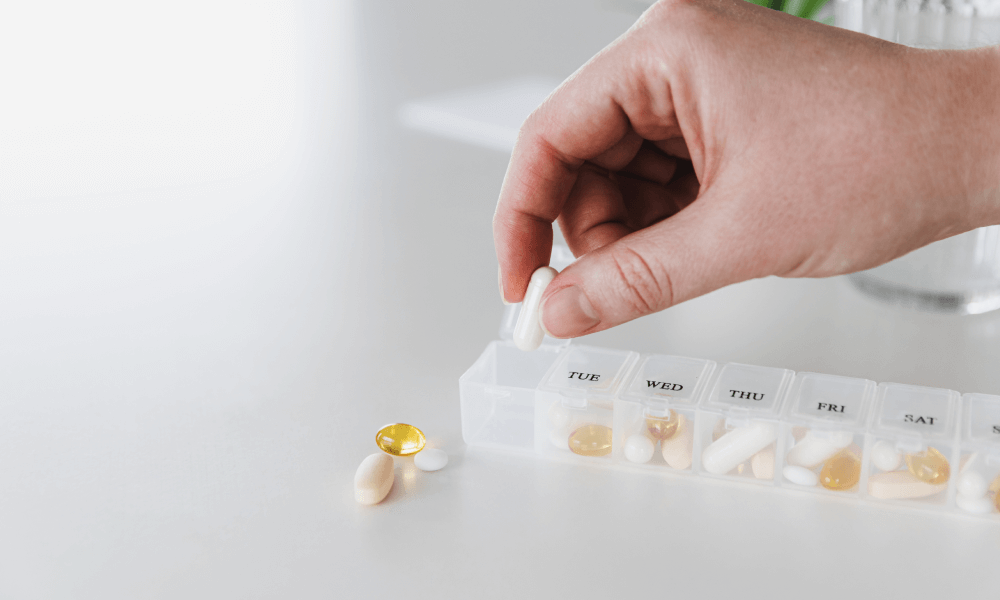Silymarin: Uses, Side Effects, Dosage, Interactions and more

Benefits of Silymarin
Silymarin does much more than just protect your liver.
Research shows that patients who took 600 mg daily for 12 months had lower fasting insulin levels.
It can also improve your heart health by reducing LDL cholesterol levels.
The antioxidant properties are a great way to get better skin health and manage allergic asthma symptoms.
How Does Silymarin Work?
This extract protects your cell membranes from damage. It fights harmful free radicals, blocks toxins from entering liver cells, and reduces inflammation. Your body gets more glutathione and thus encourages more protein synthesis, which helps create new liver cells.
Conditions It Will Treat
Silymarin helps with several liver conditions:
Fatty liver disease (both alcoholic and non-alcoholic)
Cirrhosis and hepatitis
Jaundice and gallbladder ailments
Research suggests it could also help with diabetes, fertility, skin conditions, and bone loss prevention.
Precautions While Using Silymarin
Be careful if you have:
Allergies to plants in the Asteraceae family (ragweed, daisies)
Inflammation of the gallbladder or bile ducts
Narrowing or blockage of the bile ducts
Pregnant or nursing mothers should talk to their doctor first.
What If I Missed a Dose?
Take the dose as soon as you remember it. Skip the missed dose if it's almost time for your next one. Your body needs the right amount, so don't double up.
How & When to Take Silymarin
Your body absorbs silymarin best with food or right after meals.
You'll get optimal results from 420 to 600 mg daily, divided into three doses.
Starting treatment early gives you better results while your liver can still regenerate well.
Side Effects of Silymarin
Side effects are rare but might include:
Digestive discomfort (nausea, bloating, diarrhoea)
Headaches or dizziness
Mild skin reactions
Drug Interactions
Watch out for interactions with:
Antibiotics like clarithromycin
Anticoagulants like warfarin
NSAIDs such as ibuprofen, celecoxib, and diclofenac
Statin drugs
Stay away from alcohol while taking silymarin because it could harm your liver more.
Dosage for Silymarin
The right dosage plays a crucial role in how well silymarin works in your body. Your health outcomes depend on taking the correct amount.
Doctors recommend a standard adult dosage of 200 to 800 milligrams daily, which may vary depending on your specific condition.
For protect your liver (hepatoprotection): The recommended dose of 420 to 600 mg of silymarin per day should be split into three equal parts.
Maintenance dose:
A lower dose of 280 mg daily
For drug-induced liver injury: 450 mg as starting dose.
Research has shown that higher doses don't offer much more benefit.
You can find silymarin in several forms:
Capsules and tablets (most common)
Liquid extracts
Powder formulations
Tinctures
Intravenous solutions (hospital settings only)
Different conditions need different doses. Patients with hepatic cirrhosis usually take 140 mg three times daily. Clinical studies used 600 mg daily to treat obsessive-compulsive disorder.
Your doctor's guidance matters most since your age, weight and health status affect the right dose for you.
Storage Guidelines
Your silymarin supplements need proper storage to stay effective. The right storage conditions will allow for maintaining milk thistle extract's potency over time.
A room temperature between 68-77°F (20-25°C) works best for storing silymarin.
Protection guidelines:
Keep away from direct sunlight and strong light
Avoid exposure to moisture and heat
Store out of children's reach
Maintain in original container with lid tightly closed
Opaque and airtight containers provide the best protection. Amber-coloured glass bottles protect silymarin's quality exceptionally well because they block light and remain chemically inert.
Poor storage can substantially reduce your supplement's quality.
Silymarin vs Other Liver Support Medicines
A comparison of liver support options can help you make better health choices. Let's get into how silymarin compares to other treatments.
Aspect | Silymarin | Metformin | Pioglitazone | Vitamin E |
Primary action | Antioxidant, free radical scavenger | Blood glucose regulator | Insulin sensitiser | Antioxidant |
Effectiveness for NAFLD | Reduces transaminase levels more effectively than metformin or pioglitazone | Moderate effect on liver enzymes | Less effective than silymarin for liver enzymes | Often combined with silymarin for a boosted effect |
Blood glucose impact | Reduces levels by a lot | Primary diabetes medication | Improves insulin sensitivity | Minimal effect |
Fibrosis reduction | Potent antifibrotic effects | Limited effect | Moderate effect | Moderate effect |
Side effects | Very well tolerated with minimal adverse events | Gastrointestinal issues, potential for lactic acidosis | Fluid retention, weight gain, and heart failure risk | Generally well-tolerated |
Research shows that silymarin has advantages over conventional medications for certain liver conditions. It shows excellent tolerance with minimal side effects, unlike pharmaceutical options.
Silymarin's effectiveness increases when combined with vitamin E and phospholipids. This combination improves markers of liver fibrosis and insulin resistance.
Diet & Lifestyle Advice
Your liver health improves when you combine lifestyle changes with silymarin. Studies show this combination works better than using either approach alone.
Silymarin pairs well with the Mediterranean diet. This eating style emphasises vegetables, fruits, whole grains and healthy fats while reducing processed foods and red meat. Prediabetic patients who followed this diet showed substantial improvement in liver fibrosis within six months.
You should avoid alcohol completely because silymarin works best without alcohol's counteracting effects.
Conclusion
Silymarin, a milk thistle extract, acts like your liver's personal bodyguard. It protects cell membranes, fights harmful free radicals, and helps create new liver cells when your body needs them. Patients handle it well, with nowhere near as many side effects as conventional medications.
Silymarin works even better with healthy lifestyle changes. A Mediterranean diet, weight management, regular exercise, and avoiding alcohol will boost your results by a lot. These basic changes and silymarin supplements give your liver the best shot at healing completely.
Improving liver health can be simple. Silymarin offers a natural option proven by both historical use and recent studies. It provides support to deal with fatty liver, cirrhosis, or even to protect overall liver function. Adding it to your health routine is something to consider for better wellness.
FAQs
What is silymarin used for in liver health?
Silymarin acts as a shield for liver cells against harmful chemicals, drugs, and alcohol. This potent extract removes toxins from your liver and controls free radicals that damage cells. Your liver benefits from its help with fatty liver disease, cirrhosis, hepatitis, jaundice and gallbladder problems. On top of that, it helps clear blood alcohol faster to aid recovery from alcohol-related liver damage.
Is silymarin safe to take daily?
Yes! Studies show people tolerate silymarin well, even at high doses of 700 mg three times daily for 24 weeks. But pregnant or nursing mothers should check with their doctor first. Clinical trials report no serious side effects related to treatment.
Can silymarin help with fatty liver disease?
Clinical research confirms silymarin improves both alcoholic and non-alcoholic fatty liver disease. Studies reveal it reduces liver fat buildup and brings liver function back to normal.
Are there any side effects of Silymarin supplements?
Mild symptoms include:
Digestive discomfort like nausea, bloating, diarrhoea Digestive discomfort (nausea, bloating, diarrhoea)
Headaches or dizziness
Skin rashes or itching
How long should I take silymarin to see results?
Your condition determines how quickly you'll see changes. Some people notice better liver enzyme levels within 4 weeks. Others see improvements after 8 weeks of treatment. Chronic conditions like cirrhosis might need 6-12 months to show major improvements.
